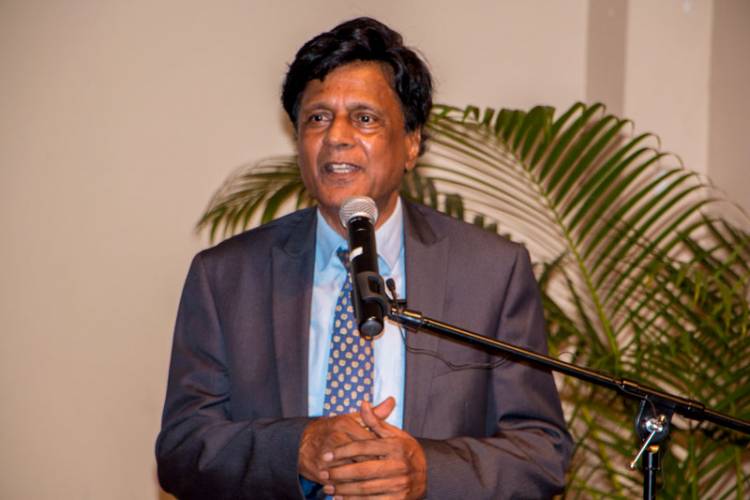ROAR of Ravi Dev
The seemingly perennial fight for “house and house-lots” invokes thoughts of the local post WWII efforts of the authorities to provide habitation for sugar workers and the urban poor who were still living in “logies/ranges” that were far more decrepit than the stables for mules, as Jack Campbell, Chairman of Bookers, observed. After all some of these logies/ranges went back to the days of slavery.
The Moyne Commission, which was taking evidence in British Guiana in 1939 following Caribbean labour protests, when five sugar workers were shot and killed at Leonora Estate, made political and social recommendations that were to be implemented after WWII. A Sugar Industry Labour Welfare Fund (SILWF) was established in 1947 by applying a levy on exported sugar, to be used for rehousing sugar workers. It was not mere altruism, however, since the system of “cut and drop” was changed the following years to “cut and load” –precipitating the 1948 Enmore protests and massacre – because it extracted more money from workers’ wages than the levy.
The number of ranges/logies in the various estates were as follows: Skeldon 49; Port Morant 95; Albion 67; Rose Hall (Canje) 132; Providence (EBB) 2; Blairmont 39; Bath 21; Enmore/Non Pariel 70; Lusignan 101; LBI 71; Ogle 35; Ruimveldt 17; Houston 23; Farm/Diamond 194; Wales 54; Versailles 52; Leonora 80; Uitvlugt 145. Out of these by 1971, there were only 17 logies standing at Port Morant and 13 at Leonora. Eventually between 1951 and 1964, some 10,785 lots were allocated and the same number of houses built.
The loans in 1951 were typically for approximately BWI$1200 (US$480) and this was supposed to provide lumber, gutters, carpenters fees, paint and painters fees for a house approximately 24’x20’ with a 12’x10’ kitchen. The lots were leased and the loans were to be repaid at a rate of $2 weekly, to be deducted from wages.
By 1947, most African Guyanese sugar workers had left the logies but were the overwhelming majority of the skilled and better paid factory workers. At Uitvlugt, the land adjoining the Public Road must have been purchased after Abolition and was called “children property”. Directly south was one large “Barrack/Garrison” on the Estate Rd housing a number of African and Indian Guyanese families and they were all housed in new “cottages” built from the SILWF Funds.
Several “cottages” dubbed “Bajan Quarters”, adjoined logies next to the sugar factory (“Letter A”) and housed a number of families from the 1929 WI brought to work on the sugar plantations from the smaller WI Islands between 1920-1928. The African “Bajans” were granted SILWF loans to build houses in the Casbah section. One vacant section of Casbah (behind the Scots School) were allocated as houselots to other African Guyanese families, as well as the two older sections which was regularized, and SILWF loans for building houses were extended. In all 288 lots were allocated and the same number of homes built.
Residents of ‘Letter “A”’ logies- all Indians – were allocated 226 houselots in the cleared land between the Public Road and the Atlantic Ocean – once the Provision Grounds of the slaves and dubbed “Ocean View” – and built the same number of houses with the SILWF loans. Other logies from around the sugar factory were relocated to ENHA lots created in Zeeburg (94), De Willem (167), E. Meten meer Zorg (151), W Meten meer Zorg (194); Zeelugt (164) and eventually Tuschen (80).
But it was not only sugar workers who were aided. In 1946, the government launched a “Central Authority” – to provide housing for the “working class” in Georgetown – which was superseded by the Central Housing and Planning Authority (CHPA) in 1948. Financing was provided from the British
Guiana Building Society Ltd, (est. 1929) and incorporated in 1940 as the New Building Society. In 1954, the Housing Dept. was created and a vigorous housebuilding programme commenced, with G$15 million spent between 1954 and 1964, producing some 3,900 houses.
We shall not extend the analysis to the 30, 180 houses the PNC claimed to have built during 1970-1980. Or the “housing schemes” and arranging for the nationalized Bauxite Industry to mirror the SILWF arrangement “to reward its supporters and suborn its opponents”, as noted by Carl Greenidge in his book.
